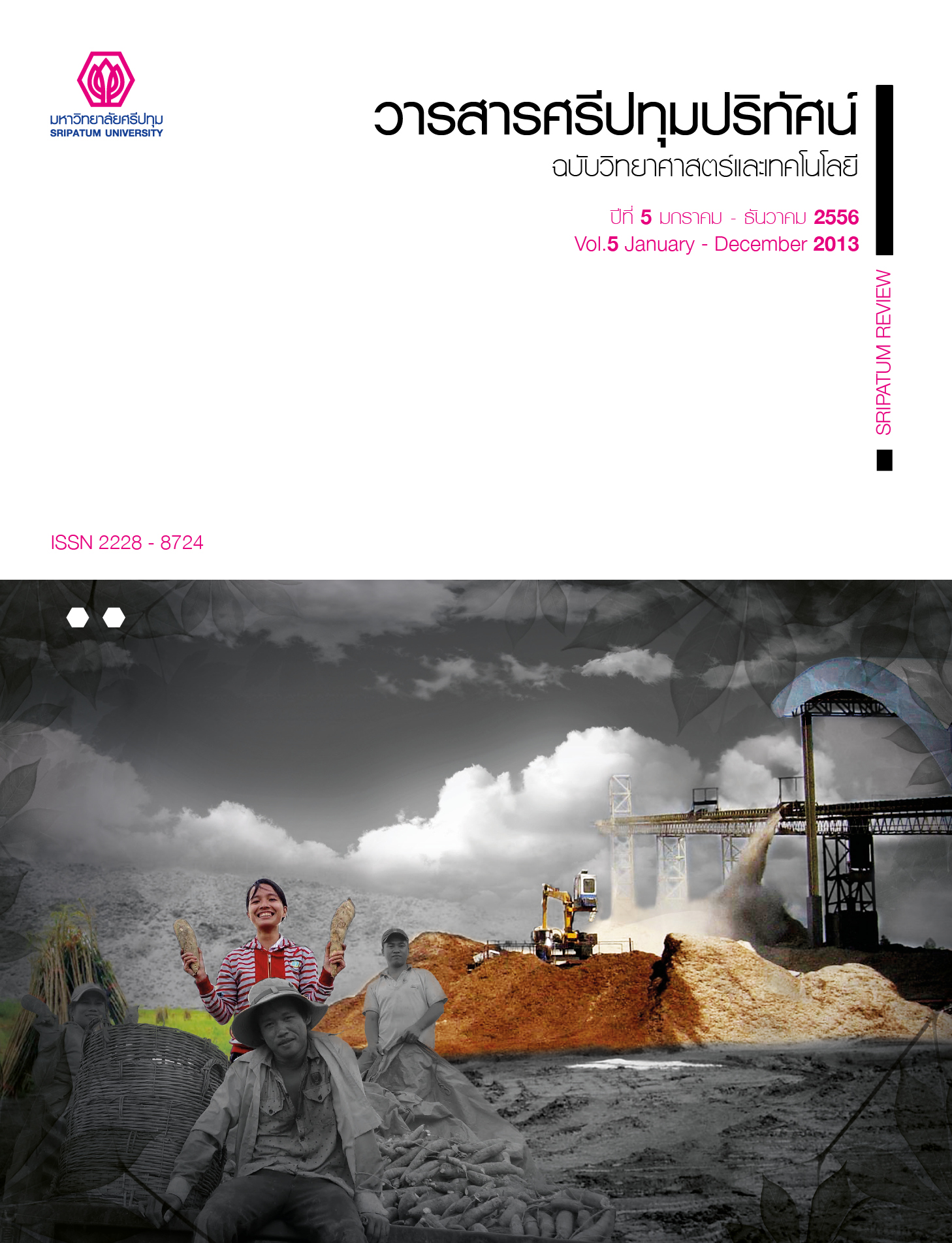THE CONCEPTUAL MODEL FOR THE DEMAND EVALUATION OF MASS TRANSIT SYSTEMS FROM THE CAPITAL TO PROVINCE BY INTEGRATED SIMULATION TECHNIQUES
Main Article Content
Abstract
The demand for enhancing Thailand’s competitive advantage, especially by the infrastructure development projects, is a crucial issue for government and relevant agencies. Among the projects, the high-speed train is the most heavily invested project because it can carry passengers, materials, and goods rapidly with low costs, which leads to logistic cost reduction. This paper, therefore, presents a simulation conceptual model of the mass transit system from Bangkok to the main provincial stations by integrating two simulation techniques: system dynamics and agent-based model. All relevant types of transportation system are also considered to support the project.
Article Details
Section
Academic Article
References
Acharya, S.R. 2005. Motorization and Urban Mobility in Developing Countries Exploring Policy Options Through Dynamics Simulation, Journal of the Eastern Asia Society for Transportation Studies, Vol. 6: 4113 – 4128.
Angerhofer, B. J. and M. C. Angelides. 2000. System Dynamics Modeling in Supply Chain Management: Research Review, pp. 342 - 352, In Proceedings of the 2000 Winter Simulation Conference. 10-13 December 2000, Orlando, FL, USA.
Barbati, M., G. Bruno, and A. Genovese. 2012. Applications of agent-based models for optimization problems: A literature review. Expert Systems with Applications Vol. 39 (2012): 6020–6028.
Cuervo, M.C., H.A.V. Bustos, and A.C.A. Aldana. 2013. Simulation Based on System Dynamics for Evaluating the Quality of Transport Service in a Complex Social System. Dyna Vol.80 (180): 33-40.
Forrester, J. W. 1961. Industrial Dynamics. The M.I.T. Press, Cambridge, MA, USA.
Kickhofer, B., I. Kaddoura, A. Neumann, and A. Tirachini. 2012. Optimal Public Transport Supply in an Agent-based Model: The Influence of Departure Time Choice on Operator’s Profit and Social Welfare, Available Source.
Kojima, T., Y. Takahashi, K. Machida, and T. Igarashi. 1995. System Dynamics Model of the Tokyo Subway System, Available Source.
Logistics Time. 2013. Exclusive Interview.
Macal, C. M. and M. J. North. 2006. Tutotial on Agent - Based Modeling and Simulation Part 2: How to Model with Agents, pp. 73 - 83, In Proceedings of the 2006 Winter Simulation Conference. 3 - 6 December 2006, Monterey, CA, USA. and . 2011. Introductory Tutorial: Agent–Based Modeling and Simulation, pp. 1456 - 1469, In Proceedings of the 2011 Winter Simulation Conference. 11-14 December 2011, Phoenix, AZ, USA.
Raux, C. 2003. A Systems Dynamics Model for the Urban Travel System, Available Source: http://hal.archives-ouvertes.fr/docs/00/09/21/86/PDF/ETC-Raux2003.pdf, September 2, 2013.
Schieritz, N. 2002. Integrating System Dynamics and Agent-Based Modeling.
Sterman, J. D. 2000. Business Dynamics; System Thinking and Modeling for a Complex World, McGraw Hill, USA.
Angerhofer, B. J. and M. C. Angelides. 2000. System Dynamics Modeling in Supply Chain Management: Research Review, pp. 342 - 352, In Proceedings of the 2000 Winter Simulation Conference. 10-13 December 2000, Orlando, FL, USA.
Barbati, M., G. Bruno, and A. Genovese. 2012. Applications of agent-based models for optimization problems: A literature review. Expert Systems with Applications Vol. 39 (2012): 6020–6028.
Cuervo, M.C., H.A.V. Bustos, and A.C.A. Aldana. 2013. Simulation Based on System Dynamics for Evaluating the Quality of Transport Service in a Complex Social System. Dyna Vol.80 (180): 33-40.
Forrester, J. W. 1961. Industrial Dynamics. The M.I.T. Press, Cambridge, MA, USA.
Kickhofer, B., I. Kaddoura, A. Neumann, and A. Tirachini. 2012. Optimal Public Transport Supply in an Agent-based Model: The Influence of Departure Time Choice on Operator’s Profit and Social Welfare, Available Source.
Kojima, T., Y. Takahashi, K. Machida, and T. Igarashi. 1995. System Dynamics Model of the Tokyo Subway System, Available Source.
Logistics Time. 2013. Exclusive Interview.
Macal, C. M. and M. J. North. 2006. Tutotial on Agent - Based Modeling and Simulation Part 2: How to Model with Agents, pp. 73 - 83, In Proceedings of the 2006 Winter Simulation Conference. 3 - 6 December 2006, Monterey, CA, USA. and . 2011. Introductory Tutorial: Agent–Based Modeling and Simulation, pp. 1456 - 1469, In Proceedings of the 2011 Winter Simulation Conference. 11-14 December 2011, Phoenix, AZ, USA.
Raux, C. 2003. A Systems Dynamics Model for the Urban Travel System, Available Source: http://hal.archives-ouvertes.fr/docs/00/09/21/86/PDF/ETC-Raux2003.pdf, September 2, 2013.
Schieritz, N. 2002. Integrating System Dynamics and Agent-Based Modeling.
Sterman, J. D. 2000. Business Dynamics; System Thinking and Modeling for a Complex World, McGraw Hill, USA.


